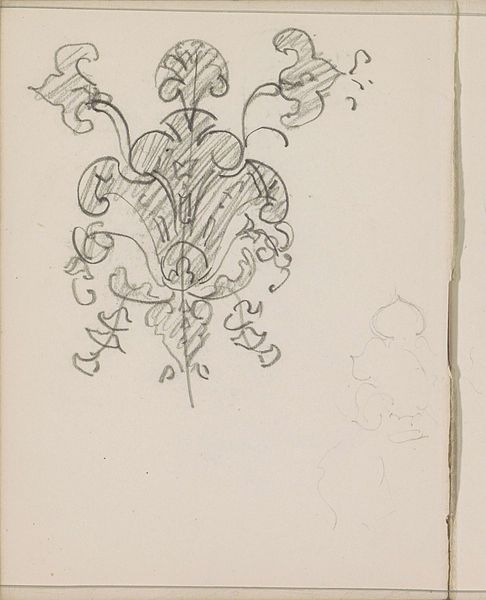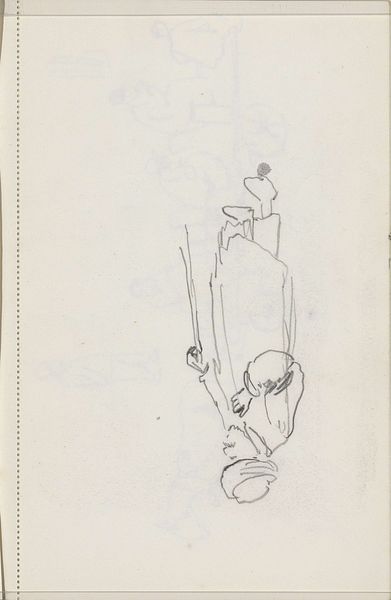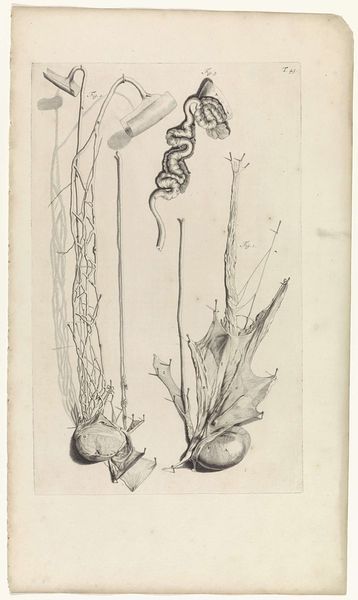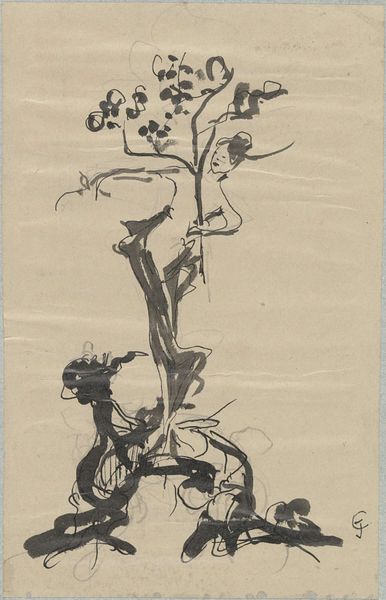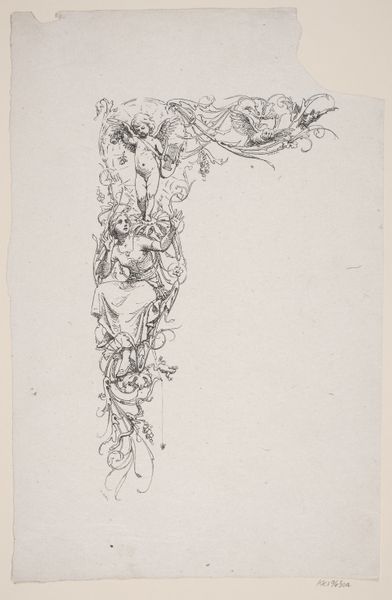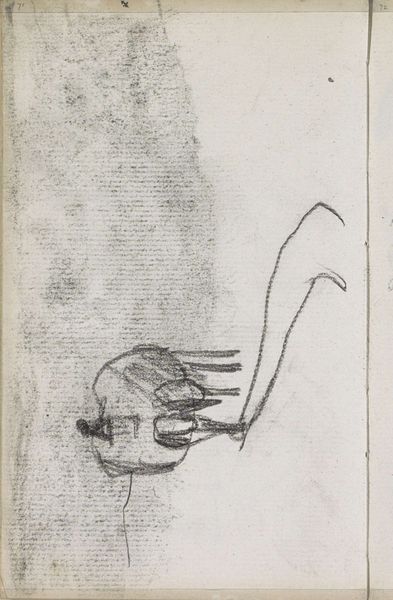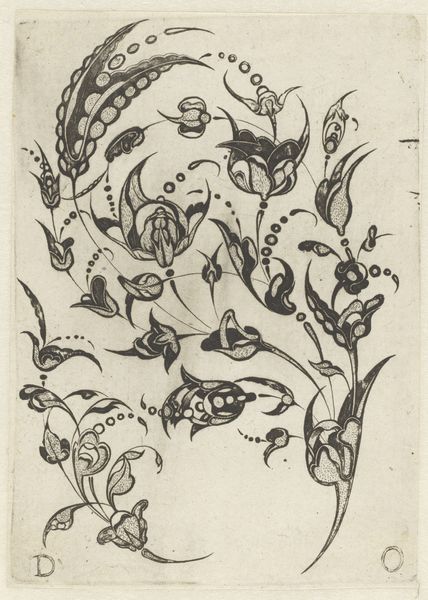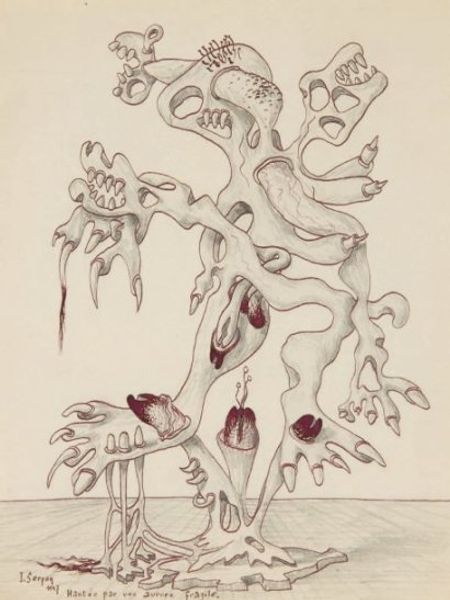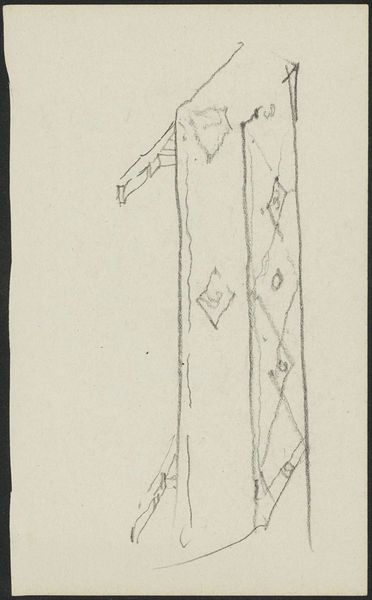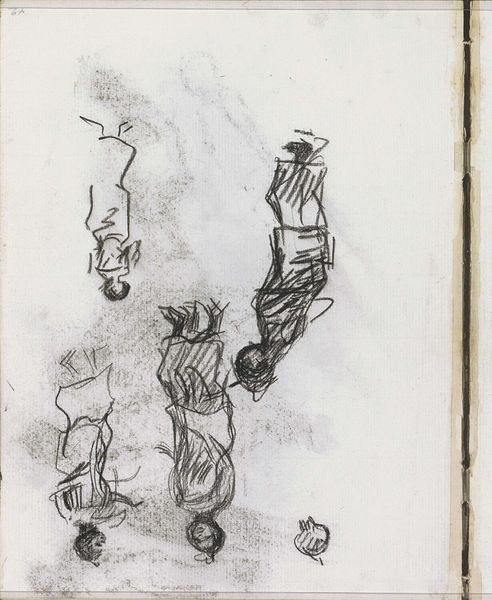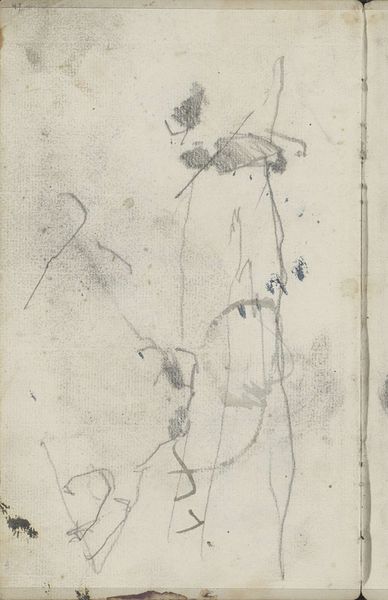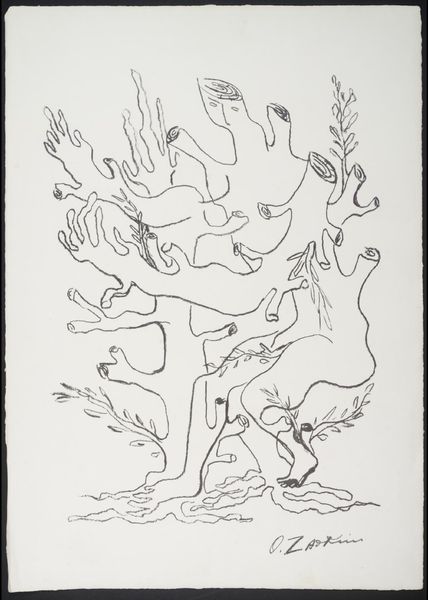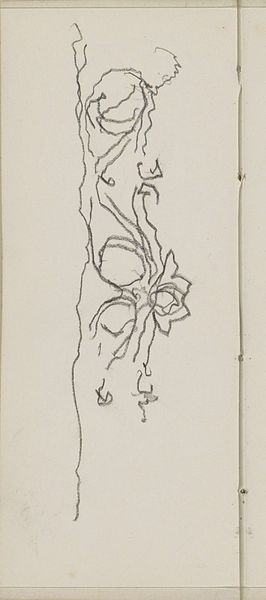
drawing, paper, pencil
#
drawing
#
organic
#
paper
#
plant
#
pen-ink sketch
#
pencil
#
line
#
sketchbook drawing
#
realism
Dimensions: height 215 mm, width 161 mm
Copyright: Rijks Museum: Open Domain
Editor: Right now, we’re looking at Julie de Graag’s "Three Studies of a Fiddlehead Fern," probably made sometime between 1887 and 1924. It’s a pencil drawing on paper and the detail is incredible! The almost scientific, realist representation stands out to me, how can something so simple seem so intricate? What do you see in this piece? Curator: It's interesting you mention the scientific element. Drawings like these were incredibly valuable in botanical studies during that period. Photography was becoming more prevalent, but detailed drawings still served an important function in documenting the natural world. We must consider its social and institutional function beyond its pure aesthetic qualities. How might this have served the scientific community? Editor: I didn’t think about that! I was so caught up in the details that I missed the bigger picture of how art serves other fields of knowledge. Curator: And that highlights an important element of art history - understanding the social and cultural context that gives artwork meaning. Was De Graag interested in botanical illustrations? Did her access to particular publications and audiences shape her creative output? Think about who she might have been drawing it for. Editor: That really contextualizes it. I suppose it moves beyond just appreciating it visually to thinking about its function. Do you think her being a woman shaped the choice of subject or the approach she took? Curator: Absolutely. Female artists often had different access to subjects and different expectations placed upon them. Still life and studies of nature were considered acceptable areas of focus for women, offering both opportunity and limitation. Understanding these social structures is critical. Editor: This makes me consider her process differently. What I first perceived as just a pretty drawing on paper now feels like a valuable record of nature. Curator: Exactly. By understanding the institutional forces at play, and the socio-cultural position of the artist, we see how profoundly images and their makers reflect broader cultural values and scientific efforts. Editor: I’ll never look at botanical art the same way again. Thanks for pointing me in a different direction!
Comments
No comments
Be the first to comment and join the conversation on the ultimate creative platform.
